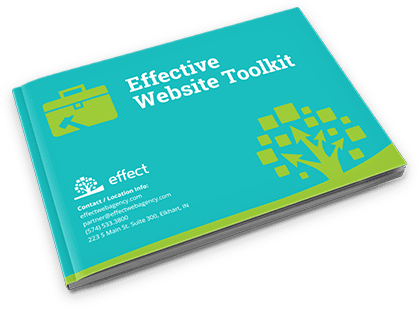In the world of digital marketing, Search Engine Optimization (SEO) ensures that businesses can maximize their online visibility and reach. However, many business owners assume that just one kind of SEO exists. This could not be further from the truth! Whether you own a small start-up or are a seasoned SEO pro, let’s explore the various types of SEO and their role in the greater digital marketing scheme.
On-Page SEO
On-page SEO is most likely what you think of when talking about SEO. This strategy involves optimizing certain elements on a webpage to increase its visibility in the search engine results pages (SERPs). On-page SEO directly impacts how search engines read, interpret, and rank individual pages. Certain on-page factors, like content, website structure, and meta tags, can be optimized for specific keywords, helping the website rank higher and driving more relevant traffic to the site. Ranking high in the SERPs is particularly important because most searchers will not click on the second page of search results.
Some critical elements for on-page SEO include optimizing content and meta descriptions. The quality and relevance of your site’s content play a huge role in how it ranks for target keywords. Content can be optimized by naturally incorporating keywords throughout the text and using relevant headings to improve user experience. Meta tags and meta descriptions help search engines understand your site and its content. Accurate and compelling meta descriptions and tags can improve click-through rates by providing valuable information to your audience and search engine.
Off-Page SEO
To complement on-page SEO, off-page SEO focuses on activities outside a site that can improve its visibility. These activities focus on building trust, credibility, and authority online through various external signals like backlinks, social media engagement, and online mentions. A positive online reputation can impact a site’s relevance and visibility in the SERPs, leading to higher rankings and increased organic traffic.
One of the key strategies for off-page SEO is link building. This is when a site gets other websites to link back to it. This shows that a site is trustworthy and authoritative in the industry, positively impacting the site’s online reputation and placement in the SERPs. Another excellent example of off-page SEO is online reviews. Consumers can leave reviews about a site or brand, impacting the brand’s online reputation.
Technical SEO
Technical SEO is a strategy that focuses on the more technical aspects of a website, like its crawlability, indexability, and user experience. Search engines, like Google, find new webpages through “crawling.” After content is published on your site, Google sends bots or “spiders” to roam the site and follow links to discover new web pages. This allows the search engine to index web pages for ranking. These spiders can only crawl sites that meet specific criteria.
This type of SEO seeks to optimize web design and the parts of the website that deal with its functionality and crawlability, like website speed, security, structured data markup, and navigation. Technical SEO lays the foundation of on-page and off-page strategies, ensuring that search engines can properly index the site for ranking.
Local SEO
Local search optimization is crucial for nearly every business. Surveys show that approximately one-third of Americans use search engines to find local businesses every week. While on-page, off-page, and technical SEO help websites rank in general queries, local SEO focuses on searches with geographical qualifiers (like “near me”) or searches done through a mapping service. This type of SEO aims to connect businesses with customers nearby, increasing online and in-person traffic.
Some critical tactics for Local SEO include:
- Google My Business. Google My Business profiles allow businesses to manage their online presence in Google Search and Maps. This profile can be customized to include important information about your business, like hours, address, accessibility, photos, and industry.
- NAP (Name, Address, Phone Number). Maintaining a consistent name, address, and phone number across all platforms is crucial for local SEO. Inconsistent information can confuse search engines, potentially leaving your web page out of local search results. NAP information must also be correct on all external sites, like online directories.
Mobile SEO
About 63% of organic searches come from mobile devices. As the use of mobile devices increases, websites need to respond appropriately. Mobile SEO involves optimizing a site for mobile searches.
There are several ways to make a mobile-friendly site, but the most common is responsive design. A responsive website delivers the same page to mobile and desktop users but changes how the page renders based on the searcher’s device. This means the same content is available to all searchers while maintaining an easy-to-use site. Another critical strategy for mobile SEO is crafting mobile-friendly content. This means using short paragraphs, relevant headings, bullet point lists, and summaries to cater to the fast-paced needs of mobile users.
In conclusion, there are many types of SEO, each serving a distinct and essential purpose. When used together, these strategies can improve a business’s online visibility, reputation, and rankings.
Contact Effect Web Agency Today!
Effect Web Agency can help you craft a digital marketing strategy that helps your business reach consumers online. Let’s work together to keep your business relevant in the rapidly changing landscape of SEO!




